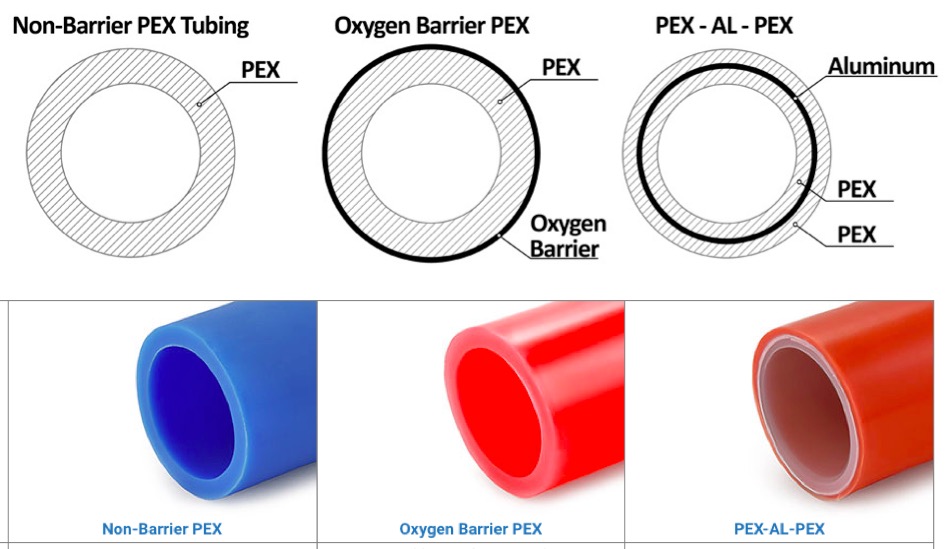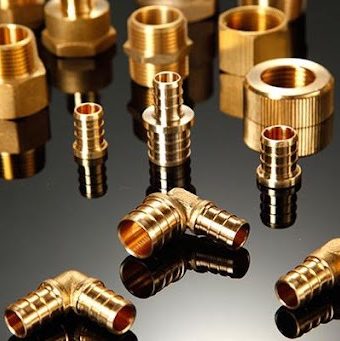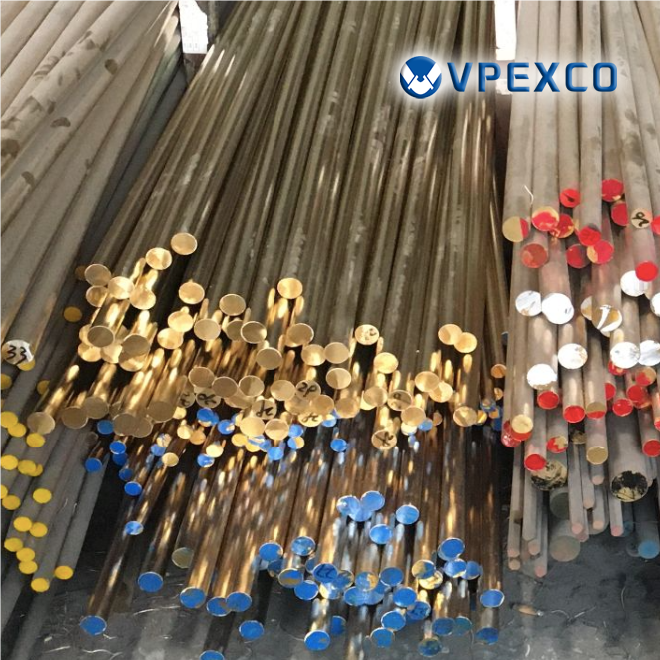Table of Contents
ToggleNon-Barrier Pex vs Oxygen Barrier Pex vs Pex-al-pex table
Features | Non-Barrier PEX | Oxygen Barrier PEX | PEX-AL-PEX |
Material | no external coatings or additional layers | PEX with an External Oxygen Barrier | PEX, Adhesive, Aluminum |
Structure | Flexible, does not retain shape | Flexible, does not retain shape | Holds shape when bent |
Expansion | More than PEX-AL-PEX | More than PEX-AL-PEX | Low |
Usage | Hot and cold water plumbing. Open-loop hydronic heating systems. | Radiant heat flooring, hydronic heating, ice/snow melting systems | Plumbing and Heating systems |
Pressure Rating | 160psi @ 73°F, 100psi @ 180°F | 160psi @ 73°F, 100psi @ 180°F | 200 psi @73°F, 125 psi @ 180°F |
Corrosion Prevention | Normal | Oxygen diffusion resistant | Normal |
Price | Lowest | mid | Highest |
Understanding the Non-Barrier Pex
Non-Barrier Pex, we also call normal Pex or Pex without EVOH, it means the normal Pex, crosslinked polyethylene pex tubing without Oxygen barrier. It’s flexible, econormical and easy for installation, so widely used in plumbing and heating system.
Non-Barrier Pex vs Oxygen Barrier Pex, the only difference is the Oxygen Barrier layer. The working temperature and pressure rating for non-barrier pex is the same as Pex with Oxygen barrier. And popular sizes is 1/2” pex, 3/4” pex, 1” pex or 16mm and 20 mm pex pipe. Normal color is blue, red, white, orange and black pex tubing same as the Pex with EVOH.
Oxygen Barrier PEX and PEX-AL-PEX are both types of crosslinked polyethylene (PEX) tubing with distinct differences and are used for different applications.

oxygen barrier pex pipehttps://www.vpexco.com/product/pex-b-evoh/
Oxygen Barrier PEX Tubing
Oxygen Barrier PEX tubing, on the other hand, is a type of PEX tubing designed explicitly for heating applications. Its unique feature is an external layer serving as an oxygen diffusion barrier.
Characteristics and uses for Oxygen Barrier PEX include:
Oxygen Barrier: Its main feature is it keeps oxygen and other elements from infiltrating and corroding the metal parts in the heating system.
Usage: Oxygen Barrier PEX is typically used in radiant heat flooring, hydronic heating, and ice and snow melting systems. Its design lets it work with iron-based components in closed-loop heating systems without causing them to rust.
PEX-AL-PEX Tubing
PEX-AL-PEX, also known as AluPEX or PEX/Aluminum/PEX, is a type of PEX tubing with layers of aluminum and PEX. Its construction is essentially a layer of PEX, a layer of adhesive, a layer of aluminum, another layer of adhesive, and a final layer of PEX.
Here are some characteristics and uses for PEX-AL-PEX:
Increased Structure: The aluminum layer helps the pipe hold its shape when bent. This means once you bend it, it will stay put, reducing the need for additional brackets.
Lower Expansion: PEX-AL-PEX has significantly lower expansion and contraction compared to regular PEX. This means it responds less to changes in temperature.
Usage: PEX-AL-PEX is typically used in heating systems where higher temperatures are involved, like floor heating or baseboard radiator applications.
Suitable for High Temperatures: Like PEX-AL-PEX, Oxygen Barrier PEX can also handle high temperatures, making it suitable for heating applications.
The choice between the two types of PEX will depend on the specific requirements of your project. So, whether thermal expansion is a concern or whether there are iron-based components in the system can influence the decision on which tubing to go with. For more information or inquiry, welcome to contact us













